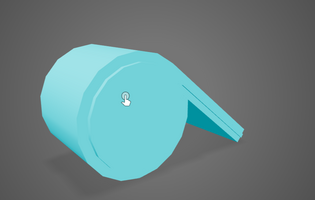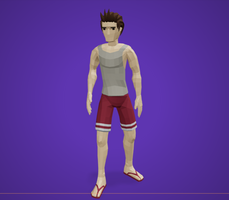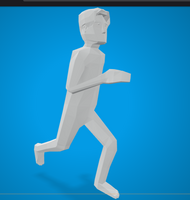Assignment 2/3 Report








KIT208 ASS2 Build-A-Team Report
What is Build-A-Team?
The Build-A-Team AR application breathes life into plain soccer cards, bringing new functionality and customisability to each pack sold, giving consumers the feeling of interacting with their favourite soccer players in the convenience of their own homes. Build-A-Team adds functionality to retail soccer cards by allowing users to see their players in 3D, build a soccer field from scratch, and customise their favourite players. Creating new or old games from thin air for real game strategy or just plain curiosity.
Application description:
Build-A-Team’s concept and actualisation can be separated into two domains: technology and user experience. Build-A-Team utilises Vuforia image tracking inside the Unity game engine, pairing a succinct camera feed analysis tool with a 3D model interaction engine. This creates a foundation from which real-world 3D objects can be tracked and projected off a 2D image. This allows anyone with the Build-A-Team application to bring their beloved sports team to life right in front of them, wherever they are.
The void that Build-A-Team fills is a marketing and interface issue with sports cards, specifically soccer cards. Sports cards have historically been printed on cardboard or plastic, with no real use except for collectors or avid fans who want signed copies. This is a huge market demographic issue, as sales are not targeting their full potential, creating an issue that needs to be fixed. Build-A-Team capitalises on this gap in marketing potential by creating an interesting application that anyone can interact with and that also requires sports cards. Incentivizing users to go out and buy sports cards for use in Build-A-Team as image targets.
Users currently only interact with conventional sports cards by looking at them briefly before discarding them or sheathing them inside sleeves, eliminating all potential interaction or enjoyment. This behaviour can be rectified through the introduction of another identified use for sports cards. Build-A-Team accomplishes this by creating a marketable application that allows for deeper interaction through 3D models in the real world. To accomplish this, augmented reality (AR) was employed as the interface through which the user would interact with Build-A-Team.
The decision to employ AR for the Build-A-Team application, is justified by the root problem and the current way sports cards are interacted with, as discussed previously above. Augmented reality, as it is called, purely changes reality as it is instructed, instead of eliminating and then substituting reality entirely with virtual reality, as it is often used for. This is therefore the perfect interface for Build-A-Team, as Build-A-Team is entirely dependent upon real-world objects that the user collects instead of electronic virtual collectables such as weapon skins in CS:GO (csgostash.com). Build-A-Team’s goal and therefore significance is that it brings your favourite soccer players to life in front of you in a 3D model, originating from a 2D card the user can turn, move, and observe from multiple angles. Build-A-Team utilises AR to unpack a sports card into reality, providing more incentive to purchase sports cards and therefore increasing their significance and overall marketability.
User Interaction:
Story board of ideal user interaction with Build-A-Team: (see story board)
The Build-A-Team interactions are necessary for this application to fulfil its pitch and overarching objectives. Build-A-Team is primarily a marketing tool and, as such, needs to be intriguing, engaging, and possess a purpose to reinforce potential marketing strategies such as online ads. The interactions in Build-A-Team, such as dragging the real-life image target with an overhead floating 3D model towards the field 3D model, engage the user by allowing them to customise their environment as they wish. Creating an experience in which an entire soccer game they have made is floating in front of them. Being able to drag and collide objects will also intrigue users as they come up with novel combinations to experiment with, such as ball and goal, or ball and player, with each leading to a new interaction outcome.
The interactions are also necessary as they keep the users coming back, with each new card bought being a potential new interaction or new model they can add to their customizable field. This gives Build-A-Team thousands of potential combinations of players fields and the game they create from them. This customizability will also be useful in real world sports, with Build-A-Team allowing players and coaches the ability to explain real strategies on a real-looking field to one another using model players. These interactions therefore allow for a clearer distribution of information with less difficulty compared to player names on a whiteboard.
Technical Development:
Build-A-Team, for the purpose of satisfying the technical development requirements arising from the Build-A-Team’s pitch and marketing purpose, has utilised Vuforia image tracking in Unity to enable AR capabilities and therefore user interaction. Vuforia is the backbone of the Build-A-Team application and has been the focus throughout technical development. Vuforia is an AR platform by PTC that offers various tools to developers creating AR experiences. The most foundational feature of the Vuforia engine is its image tracking capabilities. This feature can be separated into two main areas of functionality, image recognition and image tracking.
Vuforia enables image recognition by first storing the target image in a database. This database is then exported to Unity, where pixel markers assigned by Vuforia are attached to each image. These markers act as each image's individual feature or fingerprint, giving it individuality. Vuforia then tracks these images in the real-world, using real-time camera feed analysis that searches for each logged target's features. Once recognised, the features are then used to calculate distance and orientation in 3D space relative to the camera feed's origin. This allows for the controlled insertion of 3D models into real-world space in real time, as seen in the Build-A-Team showcase video.
Build-A-Team has multiple user AR interactions. The least complex is the ability to hide and reveal a player’s name using UI canvas buttons in unity with setActive(); multiple models have this functionality. The next most complex interaction is the ability for the user to interact with the relative proximities of an image target pair. If the goals are shown, it will prompt you to try to score a goal. When the goal's box collider registers a collision with the ball, it will display "Goal". The final and most complex Build-A-Team interaction is an array of image colliders similar in functionality to the previous interaction that reveals a model on the field when its corresponding image target is in proximity to the target, simulating the placement of that model onto the field. The image target model that triggered the appearance of the 3D model on the field is then hidden via more scripting, creating a seamless transition.
3D Model Descriptions:
Accompanying models attached above.
Beach (aka Aziz Behich):
This 3D model of a man in an athletic get up was used to imitate the real-world soccer player Aziz Behich. It is used as a stand-alone large perspective model, and as a small perspective and interactive addable character to the field’s 3d model listed below. It is hidden and shown by Build-A-Team to simulate the adding and subtracting to the field.
Male_casual (aka Awer Mabil):
This 3D model of a man in an athletic get up similarly to beach was used to imitate the real-world soccer player Awer Mabil. It is used as a standalone large perspective model, and as a small perspective and interactive addable character to the field’s 3d model listed below. It is hidden and shown by Build-A-Team to simulate the adding and subtracting to the field.
Ball: (see soccerball.jpg)
This 3D model of a soccer ball is itself a standalone 3D model arising from a picture of a ball, and an interactive model that provides a stimulus for the goals listed below. It is hidden and shown by Build-A-Team to simulate the adding and subtracting to the field.
Goal:
This 3D model of a goal is itself a standalone 3D model arising from a picture of a goal, and an interactive model that possesses text that changes based on proximity to the ball 3D model simulating getting a goal in real life. It is hidden and shown by Build-A-Team to simulate adding and subtracting to the field.
Football_field (aka field):
This 3D model of a soccer field is itself a standalone 3D model arising from a picture of a field. It interacts with every other model in this application except the whistle. It interacts by detecting a collision and then adding the colliding model to the field by revealing the model already placed on top of the field’s model.
Whistle:
This 3D model is not a stand-alone object and instead is treated as an accompanying model to the umpire model. It simulates a classic umpire’s whistle making the umpire model more apparent and recognisable.
Animated human (aka umpire):
This 3D model was utilised as per online availability, and in conjunction with the whistle model simulates a soccer umpire. It is hidden and shown by Build-A-Team to simulate the adding and subtracting to the field.
References:
Canva 2023, Canva, Canva.
Cracknell, R 2018, 5 Things to Do When You’re Bored Collecting Sports Cards, Beckett News, Beckett Media LLC, viewed 19 August 2023, <https: www.beckett.com="" news="" 5-things-to-do-when-youre-bored-collecting-sports-cards="">. </https:>
CS:GO Stash - Browse all skins, stickers and items 2013, Csgostash.com.
PTC n.d., Getting Started with Vuforia Engine in Unity | VuforiaLibrary, library.vuforia.com.
Unity - Manual: Vuforia SDK overview n.d., docs.unity3d.com.
3D models:
https://poly.pizza/m/DojKLcO34E by Quaternius (Aziz Behich)
https://poly.pizza/m/HMnuH5geEG by Quaternius (Awer Mabil)
https://poly.pizza/m/57u6P7Sr7K0 by Smirnoff Alaxander (Ball)
https://poly.pizza/m/2rytrpGfSz1 by “poly by google” (whistle)
https://sketchfab.com/3d-models/football-field-9752185eebef49d78b3ae529ea2235cf by prabhjot (Field)
https://sketchfab.com/3d-models/soccer-goal-dd82dcb8975543658f4ee5097637cb39 by davimfs7 (Goals)
https://poly.pizza/m/c3Ibh9I3udk by Quaternius (Umpire)
ChatGPT:
ChatGPT was used to write tedious repeated code, modify tutorial code, and confirm methods written by me. It was not used in generation of the devlog/report.
https://chat.openai.com/share/f5d5291f-cd24-4c33-b277-882c3b922460
https://chat.openai.com/share/42d88773-0a9d-4d46-9b25-427741753813
https://chat.openai.com/share/b4483b77-a3ea-43f9-b5e4-97dc1b3f670d
Files
Get KIT208 Assignment 2/3
KIT208 Assignment 2/3
| Status | Released |
| Category | Assets |
| Author | WobblyPenguin |
| Tags | 3D, Augmented Reality, Character Customization, Creative |

Leave a comment
Log in with itch.io to leave a comment.